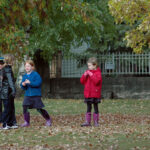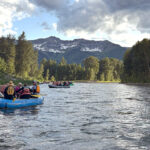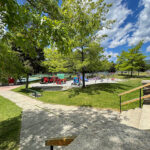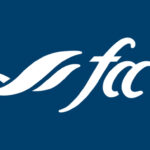Home »

First Nations lead celebration of a monument to ‘the king’
 The first ever Columbia Salmon Festival has concluded but the inaugural event will live on thanks to the unveiling of a monument to the former number one food source for regional First Nations at James Chabot Provincial Park in Invermere Saturday, Oct. 1.
The first ever Columbia Salmon Festival has concluded but the inaugural event will live on thanks to the unveiling of a monument to the former number one food source for regional First Nations at James Chabot Provincial Park in Invermere Saturday, Oct. 1.
A large number of guest speakers filled the void in the event schedule as two war canoes and a dugout filled with warriors, spiritualists and chiefs from a number of regional, and even U.S. tribes, labored against a steady north wind as they pushed toward James Chabot Beach, arriving several hours late.
 No matter. The roughly 200 people in attendance at the ceremony, including a host of elected officials and First Nations elders and dignitaries, were able to hear numerous informed and passionate speakers, and many learned about the once great importance of the Chinook salmon runs than culminated at Columbia and Windermere lakes until 1942 when the Grand Coulee Dam was put into service.
No matter. The roughly 200 people in attendance at the ceremony, including a host of elected officials and First Nations elders and dignitaries, were able to hear numerous informed and passionate speakers, and many learned about the once great importance of the Chinook salmon runs than culminated at Columbia and Windermere lakes until 1942 when the Grand Coulee Dam was put into service.
Built between 1933 and 1942, and added-on in 1974, the Grand Coulee is the largest hydro-electric power producing facility in the United States and remains one of the largest concrete structures in the world.
 Because of the enormous scale of the Grand Coulee, with the high dam topping off at 168 metres (550 feet), a fish ladder could not established and the once teeming Columbia River salmon run, perhaps the greatest such run on Earth, was cut 1,770 km (1,100 miles) short, thereby halting eons of spawning ground activity upstream, impacting the overall health of the species and severely damaging the diets and traditions of all the First Nations people upstream, including the Ktunaxa and Shuswap peoples of the East Kootenay.
Because of the enormous scale of the Grand Coulee, with the high dam topping off at 168 metres (550 feet), a fish ladder could not established and the once teeming Columbia River salmon run, perhaps the greatest such run on Earth, was cut 1,770 km (1,100 miles) short, thereby halting eons of spawning ground activity upstream, impacting the overall health of the species and severely damaging the diets and traditions of all the First Nations people upstream, including the Ktunaxa and Shuswap peoples of the East Kootenay.
For thousands of years people gathered at traditional fishing spots/spawning grounds along the Columbia, such as at Templeton Creek near Brisco, Athalmer (Invermere) and in the Fairmont Hot Springs area.
 “We are now the only nations who have no connection to the salmon. The fact we don’t have access to salmon has forever changed who are as a people,” stated Kathryn Teneese, chair of the Ktunaxa Nation Council (KNC).
“We are now the only nations who have no connection to the salmon. The fact we don’t have access to salmon has forever changed who are as a people,” stated Kathryn Teneese, chair of the Ktunaxa Nation Council (KNC).
 Shuswap elder Ox Eugene spoke about stories he’s heard about the salmon runs.
Shuswap elder Ox Eugene spoke about stories he’s heard about the salmon runs.
“The last salmon was pulled out of the Brisco area, some say, in 1937. Others say 1939,” he said, noting that Salmon Creek (now known as Templeton) was “our Shuswap play ground and training ground.”
The importance of salmon to the First Nations people can be summarized by the number of caches found along the river, Eugene said, noting there were up to 200.
 Columbia Basin Trust board chair Garry Merkel, who grew up along the Stikine River and comes from “a salmon people,” said the loss of the big salmon to Upper Columbia was an enormously devastating point in the local First Nations peoples’ history.
Columbia Basin Trust board chair Garry Merkel, who grew up along the Stikine River and comes from “a salmon people,” said the loss of the big salmon to Upper Columbia was an enormously devastating point in the local First Nations peoples’ history.
“Those dams ended it,” he said of the Grand Coulee and Chief Joseph dams. “They’re way too big for the fish to get up” and the reservoirs are so large that fry and parr (baby salmon) get lost in them and most are eaten before they can make it back to the Pacific.
“The year they actually stopped the water,” Merkel said, hundreds of thousands of salmon died at the base of the dams “and the people here came to fish and there would be no fish. That would be like the end of the world. It would be devastating,” he said.
Salmon Festival co-organizer Mark Thomas, a Shuswap Band member, noted the extent of the impacts of salmon loss on the people.
“There was a loss of confidence, a loss of self worth, anger, loss of spiritual guidance, a loss of diet, economic losses, lost fish trading opportunities, social losses, loss of family status, traditional skills were lost, language was lost,” he said.
Ta Ta Creek resident Bob Jamieson, executive director of the Columbia Wetlands Stewardship Partners, informed the audience about the grand scale of the Chinook salmon’s life and migrations.
 Before the dams were built, young salmon would embark on a terrific journey, beginning at the Columbia River headwaters. They’d make their way to the Pacific Ocean at Astoria, Oregon, and then head north toward Alaska. They then spent between one and eight years in the ocean before returning to their spawning ground to complete the cycle of their lives and begin others anew. The average time at sea for salmon is three to four years.
Before the dams were built, young salmon would embark on a terrific journey, beginning at the Columbia River headwaters. They’d make their way to the Pacific Ocean at Astoria, Oregon, and then head north toward Alaska. They then spent between one and eight years in the ocean before returning to their spawning ground to complete the cycle of their lives and begin others anew. The average time at sea for salmon is three to four years.
Salmon spawn between northern California and Alaska, with spawning streams also found in Kamchatka, Russia’s westernmost region, and in some of Japan’s northern islands.
 The seemingly miraculous nature of how the salmon find their way back to the same streams in which they were born leaves most people in awe. There is actually science to it, Jamieson noted.
The seemingly miraculous nature of how the salmon find their way back to the same streams in which they were born leaves most people in awe. There is actually science to it, Jamieson noted.
“They sniff the chemical signature of each river. They know when they’re at the Columbia River and then they’d travel 2,000 miles to get here,” he explained.
“The king and most important of the salmon is the Chinook,” Jamieson said. “They are one of the most spectacular animals on the landscape.”
The Upper Columbia River has lost two vital natural, living components in the last half a century, Jamieson pointed out, noting the leopard frog and the Chinook salmon.
Another often unconsidered aspect of the loss of the great salmon to the Upper Columbia is the vital nutrients from the bodies of the dead salmon, which added valuable food sources and fertilizer to the river and wetlands.
A key purpose of the Columbia Salmon Festival and of the beautiful monument, created by Kimberley artist Tony Austin, is to re-launch efforts to have the king of the salmon returned to the Upper Columbia River.
 Efforts to restore salmon began in the 1950s but nothing realistic or firm has come from any of the attempts to draw attention to the cause or to find ways to make it happen.
Efforts to restore salmon began in the 1950s but nothing realistic or firm has come from any of the attempts to draw attention to the cause or to find ways to make it happen.
That does not in any way seem to be a deterrent to the current efforts underway.
“Although we have a monument, we don’t have our salmon back,” said KNC member Joe Fortier. “We have to get together to bring our salmon back – not just for us but for all beings – they are special,” he said, noting the historic significance of the past few days as there was a meeting with U.S. tribes to discuss issues about the Columbia River.
“They’re part of this, too,” Fortier said.
 Shuswap Band economic development officer Dean Martin spoke on behalf of his father, Chief Paul Sam, who was undergoing a surgery in a Calgary hospital on Saturday and could not attend the meeting.
Shuswap Band economic development officer Dean Martin spoke on behalf of his father, Chief Paul Sam, who was undergoing a surgery in a Calgary hospital on Saturday and could not attend the meeting.
A long-time proponent of having the salmon returned and someone who has long dreamed of seeing a monument erected for the fish, Paul Sam would be proud and pleased, Martin said.
“I know one of his passions is about the salmon – about bringing the salmon back to the valley,” he said. “Since the salmon stopped showing up, with the dams put in place and what have you, something’s been missing. Our chief would be very happy. I’m sure he’ll end up down here, taking a look at this monument and carving his name or something,” he laughed.
Teneese echoed Fortier, noting that the return of the king salmon would correct a wrong on all people.
“Not only will it be beneficial to First Nations but to all who share in this collective homeland,” she said.
It took a while for Akisqnuk Chief Lorne Shovar to make a few words, as he was in one of the canoes guests and participants were eagerly anticipating arriving.
Tired, Shovar simply stated after they arrived, to much ceremony and applause, and a little bit of rain, that he welcomed everyone and noted how the day was “a momentous occasion.”
Splatsin First Nation Chief Wayne Christian noted how two circling eagles had blessed the canoe entourage at the start and pointed out how salmon is special to all races.
 “It is time we can together as one” to bring the salmon back, he said.
“It is time we can together as one” to bring the salmon back, he said.
Columbia-Kootenay MP David Wilks said salmon is important to his region and we promised to work “with all agencies to try and bring the salmon back again.”
Pointing at the monument, he said it is a “reminder that they will be back.”
Regional District of East Kootenay Electoral Area F director Wendy Booth urged residents to remain involved in issues such as the approaching possible Columbia River Treaty renegotiations and praised the creation of the monument.
“It’s really important we have the history of the salmon and how we got here,” she said.
Speaking on behalf of the District of Invermere, Councilor and mayoral candidate Al Miller noted the unveiling of the monument as “a very special occasion. It’s such an important part of our history and our heritage.”
Ox Eugene said he is encouraged by the renewed stand on bringing the salmon back.
“It’s very nice that people have finally realized we should revive the salmon,” he said, “whether they ever come back or not.”
Event emcee was Joe Pierre of Cranbrook, who admirably kept the proceedings ticking along, while people patiently waited for the canoeists to arrive to complete the ceremony.
Along with a rousing and animated version of the Ktunaxa Creation Story, Pierre kept his comments relevant and incisive.
He noted how the people are in many ways like the salmon.
“My son knows, wherever we go around here, he knows he’s connected to home,” he said, explaining by telling a story about how he told his five-year-old son, when they were in the Jumbo drainage one day, how Jumbo flows down into the Columbia (via Toby Creek). “He gets it.”
He also noted how the Blackfoot people once called the Ktunaxa “the fish eaters,” as a timeworn reminder of their connection to the king of the fish.
Following the ceremony guests were invited to a delicious meal of, naturally, salmon, rice, vegetables and fry bread.
For more detailed information on Chinook salmon go to: https://www.pac.dfo-mpo.gc.ca/fm-gp/species-especes/salmon-saumon/facts-infos/chinook-quinnat-eng.htm
Ian Cobb/e-KNOW
And Carrie Schafer/Through My Eyes Photography







